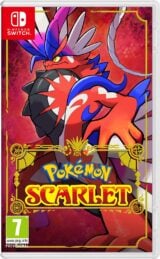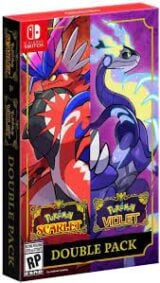Nightingale has all the tools to be the next surprise survival hit
A clever spin on procedural generation makes Nightingale’s world feel limitless

The survival genre is incredibly saturated.
While that’s not a surprise – especially when the most culturally significant game of the past 20 years is the leader in the genre, and inspired an industry-wide gold rush in its wake – it may make you question why companies are still going after it. The list of games that have tried to be the next Minecraft or Ark is endless, but that doesn’t mean there’s no room in the stable for other runners.
Look at 2024’s surprise hit, Palworld. Its distinct whiff of Pokémon aside, Palworld is a quintessential survival game. It’s bashing sticks and rocks together to eventually build an empire, and people are falling over themselves for it. Palworld is proof, if need be, that the survival genre still massively resonates with an audience if it’s done well. And from what we’ve played, Nightingale does it very well.
Nightingale describes its aesthetic as “Victorian gaslamp fantasy,” and it’s one of the things that immediately sets the game apart. While walking you through the routinely boring admin of explaining the controls, the stakes of the world, and how you build your first bed for the night, the game distracts you with beautiful art and an extremely intriguing world that we’re desperate to get to the bottom of.
You’re guided by Puck, every bit the mischievous unreliable narrator that his Shakespearean namesake warrants. Nightingale sets its tone incredibly well, even though mechanically you’re doing the most basic things a survival game could teach you. It’s a clever trick that makes the game instantly more interesting.
You’re soon introduced to Realm Cards. These items – which are given to players via quests, or seemingly through other in-game means that we didn’t have access to – are how you determine the biome in which you play. There are large portals throughout the world, in which players deposit these cards in order to generate the next world they visit.
In short, you can determine the environment, be that a lush forest or an arid desert, and what you’re likely to find in there. No two of these Realms are the same: the developers claim that even when two players enter the exact same cards, while the key characteristics remain consistent, the topography, points of interest, and challenges within will change.

There are three types of cards: Major, Minor, and Biome. Biome, as the name would suggest, dictates your environment. It’s the broadest brush stroke the game offers, and the canvas for the more specific cards.
Minor cards influence things like how rich in resources an area is, or an environmental quirk like the weather. These cards seem to serve players in that they create scenarios for certain rare materials to spawn.
Maybe a specific type of tree will only spawns with a hyper-specific combination of cards. It’s the mystery of the early Minecraft crafting system applied to world design.
Finally, Major cards influence the game’s narrative and quests. You can spawn into a world that’s hostile and full of enemies ripe with loot, or you can generate a Realm that will send you on a quest to explore the last remnants of a previous civilisation.
The exciting thing about Nightingale is that the card system feels absolutely tailor-made for community-led exploration. Virtual watercooler chat becomes “have you tried these three cards?”. Like a real deck of cards, the more that are added to the game and the player’s virtual hand, the potential for seemingly limitless new experiences only grows.

Despite how exciting procedural generation and the prospect of limitless worlds are on paper, there’s a less than stellar history in video games of how it’s actually implemented. We didn’t have these worries during our time with Nightingale and that’s not due to the relatively short amount of time we’ve spent with the game so far.
The Realm system is a great gimmick, but it doesn’t feel like the thing the whole game is holding itself up by. Instead, it’s an imaginative approach to the dull landscape of most survival game worlds. Instead of reseeding over and over again to find something that works for what you want, the Realm system makes you a far more active player in designing the fun.
The survival mechanics underneath are rock solid, and while we didn’t get close to the end of the game’s technology tree (which appears to feature firearms), we are desperate to get back to it.
Nightingale has huge potential, even in a genre that’s packed to the rafters. The Realm system doesn’t only offer players a chance to explore and discover as a community rather than being led down a garden path, it also lets players make Nightingale whatever they want it to be.
Want to focus on the strange, almost theatrical narrative that appears to be forming? Simply pick the corresponding cards. Do you want to build up weaponry and take on hostile environments? Pick that card. It’s entirely up to you.














